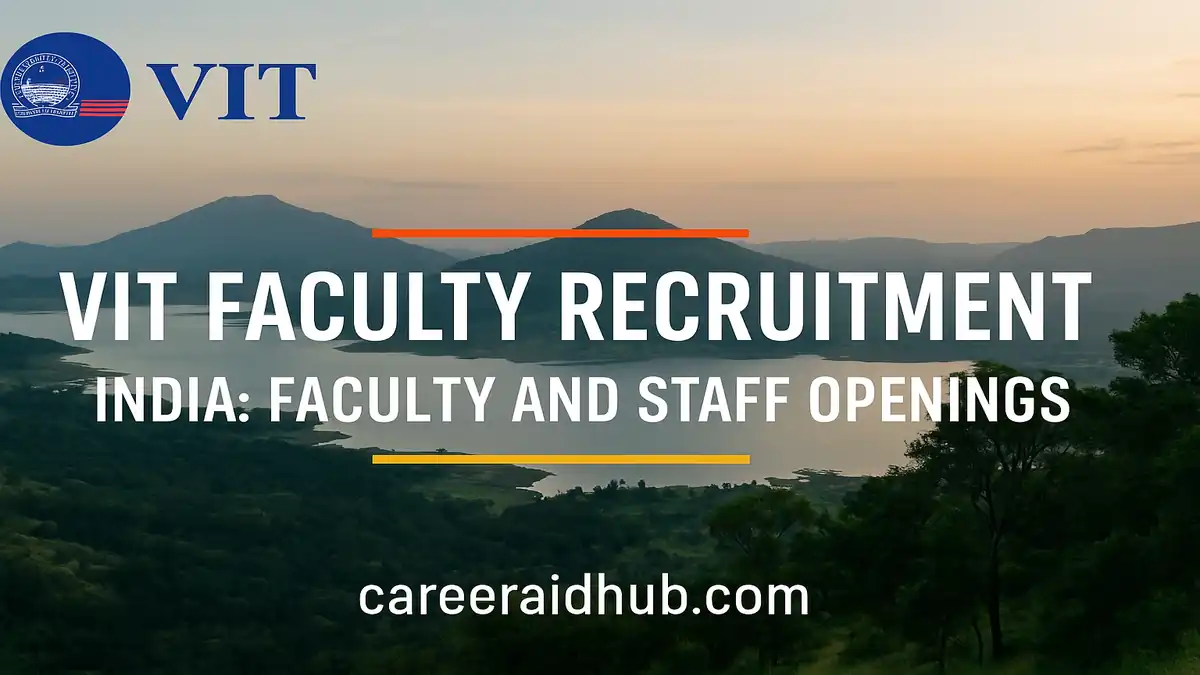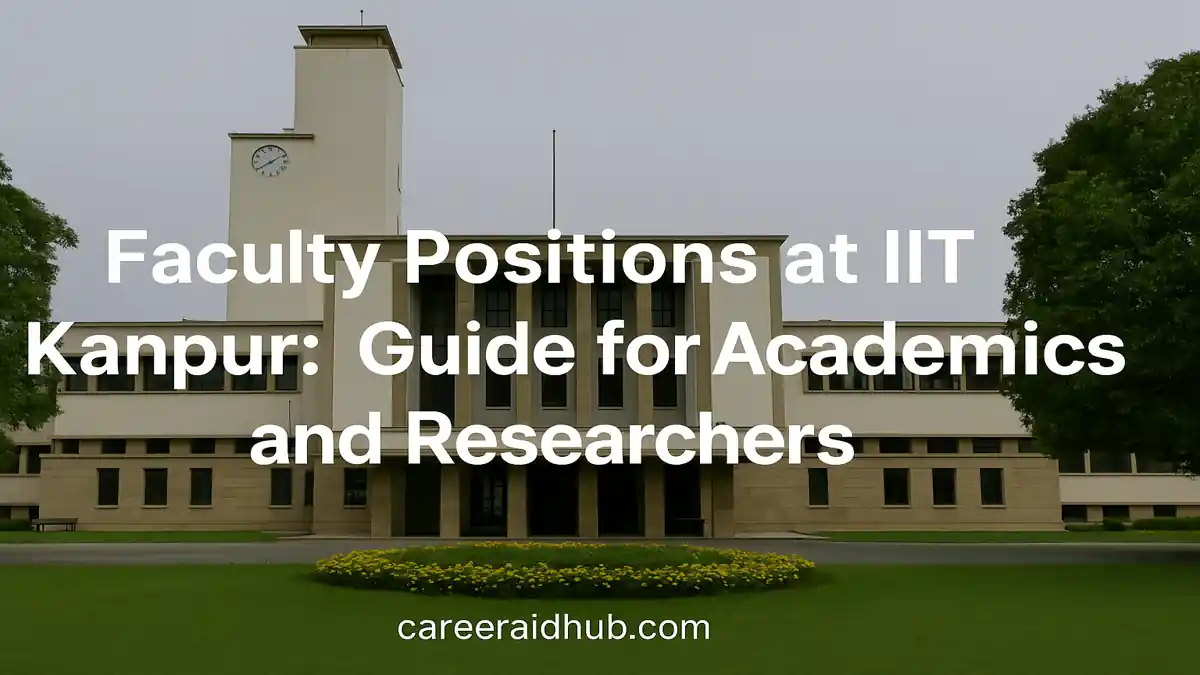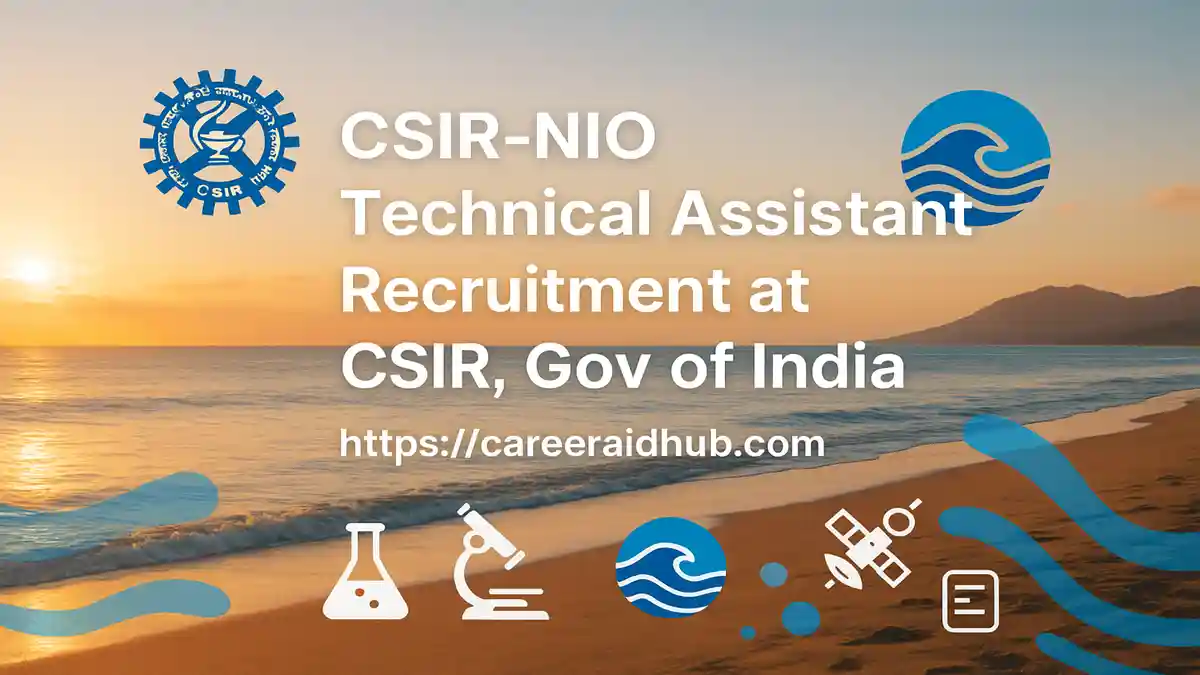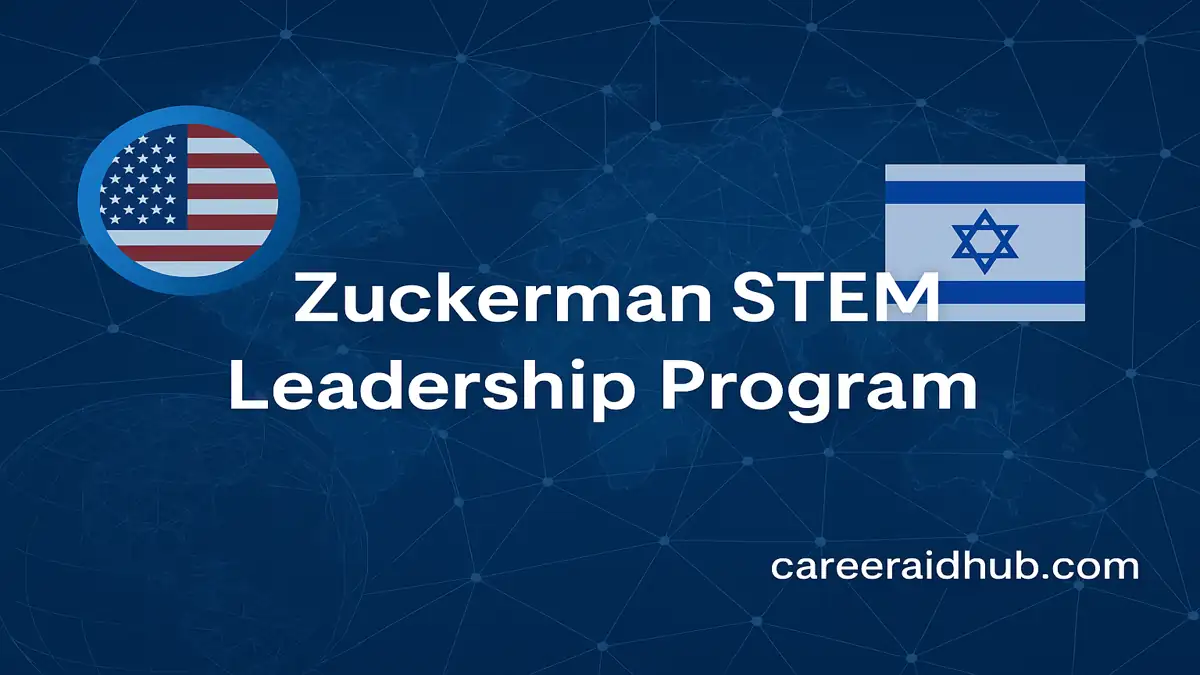Yale Center for Natural Carbon Capture (YCNCC) Postdoctoral Fellowships: A Complete Application & Success Guide
Introduction: Why the YCNCC Fellowship Matters
The Yale Center for Natural Carbon Capture (YCNCC) supports ambitious postdoctoral research that advances credible, scalable carbon capture pathways across ecosystems, geology, oceans, and carbon utilization. Fellows join a cross-disciplinary community that values scientific rigor and real-world deployment. This guide distills what the program seeks, how to prepare a competitive application, and where to focus your proposal for maximum impact.
Join Yale’s YCNCC Postdoctoral Fellowships to pursue rigorous, solutions-oriented research on natural and nature-inspired carbon capture. With interdisciplinary mentorship, world-class facilities, and mission-driven impact, this fellowship empowers early-career scholars to translate science into durable climate solutions—across ecosystems, geology, oceans, and carbon utilization—while building a competitive, high-visibility academic profile.
Mission & Scope
YCNCC’s mission is to generate actionable knowledge that reduces atmospheric greenhouse gases while safeguarding environmental integrity. Fellows investigate mechanisms, metrics, and models that enable carbon capture to be safe, effective, and durable. The fellowship embraces interdisciplinary approaches—pairing, for example, biogeochemistry with remote sensing, or materials science with techno-economics.
Core Research Themes
-
-
Ecosystem Capture: Forests, soils, wetlands, and blue-carbon systems; permanence, MRV (measurement, reporting, and verification), and
climate resilience. -
Geological & Ocean Capture: Enhanced weathering, mineralization, alkalinity enhancement, and coupled ocean–biogeochemical feedbacks.
-
Industrial Carbon Utilization: CO₂-to-materials and fuels; catalysts; performance and durability; life-cycle and techno-economic assessments.
-
Quick Facts (Feature Table)
Note on timelines: The application window typically falls between October and December, with decisions announced in late winter and starts commonly July–December of the following year. For the next cycle, anticipate Oct–Dec (we will update soon). Use these months for planning; always verify the current call.
Eligibility & Fit
Academic Background
Applicants should hold a Ph.D. (or equivalent) in a field that clearly maps to one or more YCNCC themes. Beyond credentials, the committee looks for evidence of research traction—such as first-author publications, robust datasets, or distinctive methods—and a clear plan to accelerate that trajectory at Yale.
Postdoctoral Experience Window
The program typically expects less than four years of prior postdoctoral experience at the time of application. This ensures alignment with the fellowship’s “early-career launchpad” intent.
Intellectual Alignment
Strong proposals do three things well:
-
-
Target a consequential question that reduces uncertainty or unlocks deployment.
-
Demonstrate methodological credibility (e.g., validated models, reproducible protocols, or testable hypotheses).
-
Leverage Yale’s ecosystem—facilities, datasets, and mentors—in ways that materially raise the project’s odds of success.
-
Application Timeline & Planning Milestones
Typical Annual Cycle (Planning Months)
-
-
Project Scoping & Host Outreach: Aug–Oct
-
Interfolio Submission Window: Oct–Dec
-
Review & Interviews (if any): Jan–Feb
-
Notification: Feb–Mar
-
Offer Confirmation: March
-
Appointment Start: Jul–Dec (following the application year)
-
Forecast for Next Cycle
Plan for the same Oct–Dec application window next year (we will update soon). Build a personal backward plan (host engagement, proposal drafting, letter requests) that begins two to three months before the expected call opens.
Required Documents (What to Submit)
Core Package
-
-
Curriculum Vitae (with full bibliography): Prioritize clarity. Use consistent citation style; include preprints, datasets, software, and DOIs.
-
Research Proposal (≤ 3 pages, figures included; references excluded): Target a precise knowledge gap. State your central hypothesis, datasets, methods, validation plan, and decision-relevant outputs.
-
Two Letters of Recommendation: Select referees who can speak to your independence, creativity, and reliability.
-
1–2 Publications (PDF):
Provide your most relevant, field-defining work. In-prep or submitted pieces can be included if they reveal your method or dataset strengths. -
Host Faculty Support Letter (≤ 1 page): This letter is pivotal; it must confirm lab fit, mentoring approach, and the concrete infrastructure that enables your plan (e.g., facilities, instruments, HPC, field access).
-
Word-Choice & Formatting Tips
Use short paragraphs, informative subheadings, and declarative topic sentences. Replace generic claims (“this is impactful”) with verifiable specifics (datasets, performance baselines, error bars, validation protocols).
How to Secure—and Strengthen—Your Yale Host
Mapping Prospective Mentors
Start with research groups that publish in your niche, then broaden to complementary labs that cover your missing pieces (e.g., geochemistry for kinetics, policy for governance, statistics for uncertainty quantification). Prepare a concise “project kernel” (150–250 words) for outreach.
Building the Case for Fit
In initial calls, discuss instrument time, field permissions, HPC queues, data stewardship, and lab bandwidth for mentoring. Offer a one-page “resources matrix” listing required facilities and how each will be used. This helps your host draft a precise support letter.
Co-Designing the Proposal
Iterate with your host on:
-
-
Hypotheses & success metrics (quantified where feasible).
-
Validation workflow (lab
→ mesocosm → field; or model → hindcast → forecast). -
Risk management (technical risk, ecological safeguards, and governance considerations).
-
Deliverables (publications, datasets, open-source code, policy briefs).
-
Crafting a Competitive Proposal
1) Problem Framing & Novelty
Define the real-world barrier: permanence uncertainty, MRV limitations, deployment bottlenecks, or durability questions. Explain exactly how your method reduces that barrier. Cite baselines and show how your approach increases accuracy, lowers cost, or improves scalability.
2) Methods & Validation (Design for Decision-Use)
Propose a validation chain: bench protocols with controls, mesocosm or pilot studies for realism, and model integration for scale. Outline uncertainty analysis (sensitivity testing, cross-validation, error propagation) and specify decision thresholds.
3) Data, Reproducibility & Open Science
Pre-commit to FAIR data principles. Provide a versioned repository plan (e.g., OSF, Zenodo, institutional repositories) and detail metadata standards. Where appropriate, release code under a permissive license to accelerate uptake and citations.
4) Responsible Research & Deployment
Discuss ecological risks, social safeguards, and monitoring. Explain how you will avoid adverse side-effects, respect local contexts, and design transparent MRV. Where relevant, align with emerging standards and governance frameworks.
Sample Project Ideas (Customizable)
Ecosystem Capture
-
-
Soil Carbon Dynamics: High-frequency flux monitoring to resolve drought–rewet pulses and quantify permanence.
-
Forest Carbon under Disturbance: Integrate remote sensing with plot networks to project storage under fire and pest regimes.
-
Blue Carbon MRV: Fuse satellite data, UAV imagery, and in-situ cores to reduce measurement error in wetlands and seagrasses.
-
Geological & Ocean Capture
-
-
Enhanced Weathering Kinetics: Lab–field coupling to constrain rate laws, secondary mineral formation, and alkalinity export.
-
Ocean Alkalinity Enhancement (OAE): Model carbonate system feedbacks and ecological thresholds; co-design monitoring and safeguards.
-
Industrial Carbon Utilization
-
-
Catalysis for CO₂-to-Materials: Discover/select catalysts that achieve low-temperature conversion with favorable LCA.
-
CO₂-Derived Construction Materials: Long-term durability tests under real climate loads; quantify embodied-carbon benefits.
-
Selection Insights & Common Pitfalls
What Reviewers Reward
-
-
Clear, testable hypotheses with measurable outcomes.
-
Cohesive host fit and credible access to resources.
-
Integration across methods or disciplines that yields new leverage.
-
A plan for publishing, sharing data/code, and communicating to decision-makers.
-
What to Avoid
-
-
Overly broad aims without a validation path.
-
Vague host letters that list interests but not infrastructure.
-
Minimal risk analysis or absence of ecological safeguards.
-
Dense jargon that obscures the practical contribution.
-
Step-by-Step Checklist (Print-Friendly)
-
-
Confirm Eligibility (degree, early-career window).
-
Identify 1–2 Prospective Hosts and send a project kernel.
-
Co-Draft a 3-Page Proposal (gap, methods, validation, outputs).
-
Secure the Host Letter (infrastructure, mentoring, execution plan).
-
Request Two Recommendations (give referees your proposal + CV).
-
Select 1–2 Publications (most relevant and revealing).
-
Finalize CV (standardized citations; DOIs; datasets/software).
-
Submit via Interfolio in the Oct–Dec window; track confirmations.
-
Prepare for Interviews (if invited): 10-minute pitch + validation detail.
-
Plan Start Date (Jul–Dec of following year) and onboarding steps.
-
Review & Update Timelines
-
-
Initial Publication: Immediately after the live call opens.
-
Light Update: Mid-cycle (Nov) to surface FAQs and clarifications.
-
Post-Cycle Update: Early spring to capture decisions and lessons learned.
-
Next-Cycle Preview: Late summer; refresh months and resources (we will update soon).
-
Backlink-Attracting Elements
-
-
Expert Tips: Provide a one-page “resources matrix” template for host discussions.
-
Actionable Checklists: Include the 10-step submission checklist above.
-
Stats & Examples: Summarize typical MRV error reductions or durability targets (with citations, where available).
-
Unique Angle: Emphasize validation chains and decision thresholds—often under-explained in generic guides.
-
Conclusion: Turning a Great Idea into an Executable Plan
YCNCC’s postdoctoral fellowships reward proposals that fuse novelty with execution. Define a tractable question, map a credible validation chain, and partner with a Yale host who can deliver facilities, data, and guidance. If your plan reduces uncertainty for real-world deployment—and you demonstrate how Yale elevates it—you will stand out in review. For official policies, dates, and submission details, always consult YCNCC’s program page.
Quick Facts (Feature Table)
| Feature | Details |
|---|---|
| Program Name | Yale Center for Natural Carbon Capture (YCNCC) Postdoctoral Fellowship |
| Host Country | United States |
| Funded By | Yale University (YCNCC) |
| Duration | Typically 1–2 years (may vary by award and host) |
| Study Mode | Full-time, on-campus |
| Eligibility | Ph.D. in a relevant field; generally < 4 years of prior postdoctoral experience |
| Financial Support | Competitive stipend; standard Yale postdoc benefits; research support through host |
| Fields of Study | Ecosystem capture, geological/ocean capture, industrial CO₂ utilization, cross-cutting methods |
| Deadline | Oct–Dec (current cycle); Next cycle: Oct–Dec (we will update soon) |
| Official Website | YCNCC Postdoctoral Fellowship |
Frequently Asked Questions
The YCNCC postdoctoral fellowship funds early-career researchers advancing natural and nature-inspired carbon capture. Moreover, interdisciplinary applicants ready for rigorous, deployment-relevant research should apply.
Applicants hold a relevant Ph.D. and, typically, have fewer than four years of prior postdoctoral experience. Additionally, strong research fit and a committed Yale host are essential.
Yes. Moreover, the host letter must outline facilities, mentoring approach, and project alignment, demonstrating that Yale can support the proposed work effectively.
Generally, submissions run in the October–December window via Interfolio. However, always verify the current call for exact monthly timing and requirements.
Prepare a CV, a three-page research proposal, two recommendations, one to two publications, and—crucially—a Yale host support letter confirming resources and mentoring.
Eligible topics include ecosystem carbon capture, geological and ocean pathways, and industrial CO₂ utilization. Furthermore, cross-cutting MRV, modeling, LCA, and TEA are welcome.
Fellows receive a competitive stipend, standard Yale postdoc benefits, and host-provided research support. Nevertheless, confirm specifics with current program materials before applying.
First, map labs with complementary methods. Then, send a concise project kernel and a resource needs matrix, inviting co-design of hypotheses, validation, and deliverables.
Yes. However, international candidates should confirm visa eligibility, appointment category, and start-date logistics with Yale administrators and the prospective host early.
Premium Mentorship for a Stronger Application
- Premium Mentorship: personalised 1:1 guidance for this and similar opportunities
- In-depth review of your CV, academic profile, and key statements
- Aligned with international selection criteria so your profile matches what panels expect
- Stronger, more compelling narrative for highly competitive calls
- Step-by-step support from opportunity mapping to final submission (fee-based)










